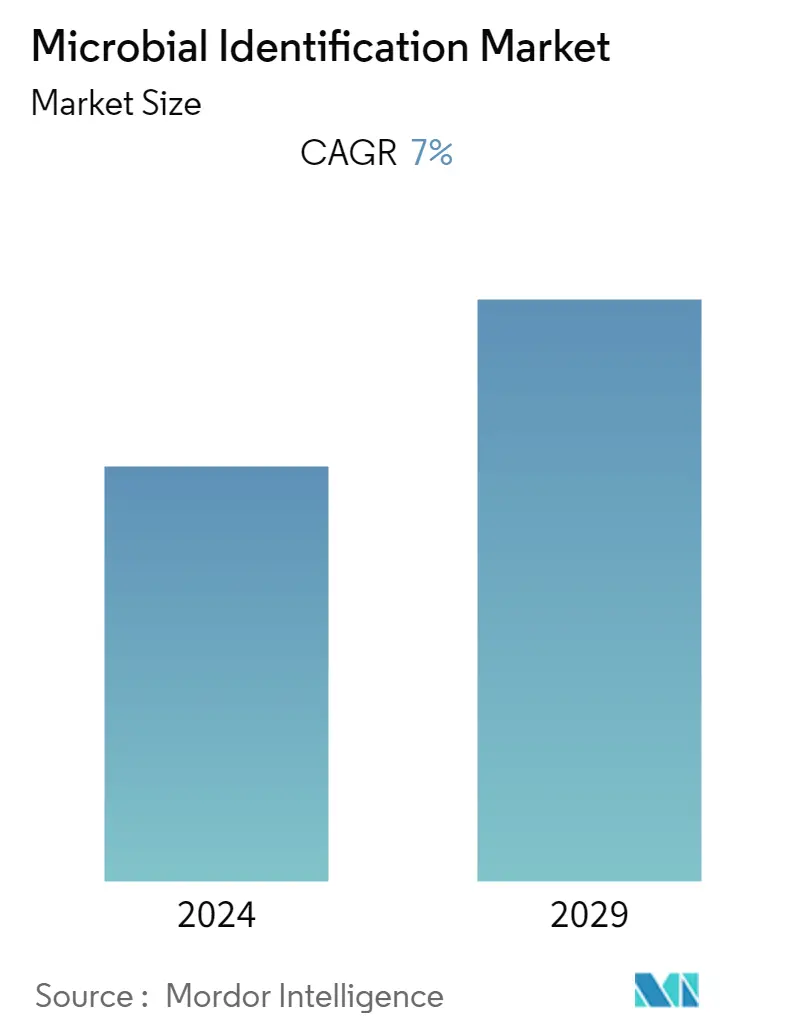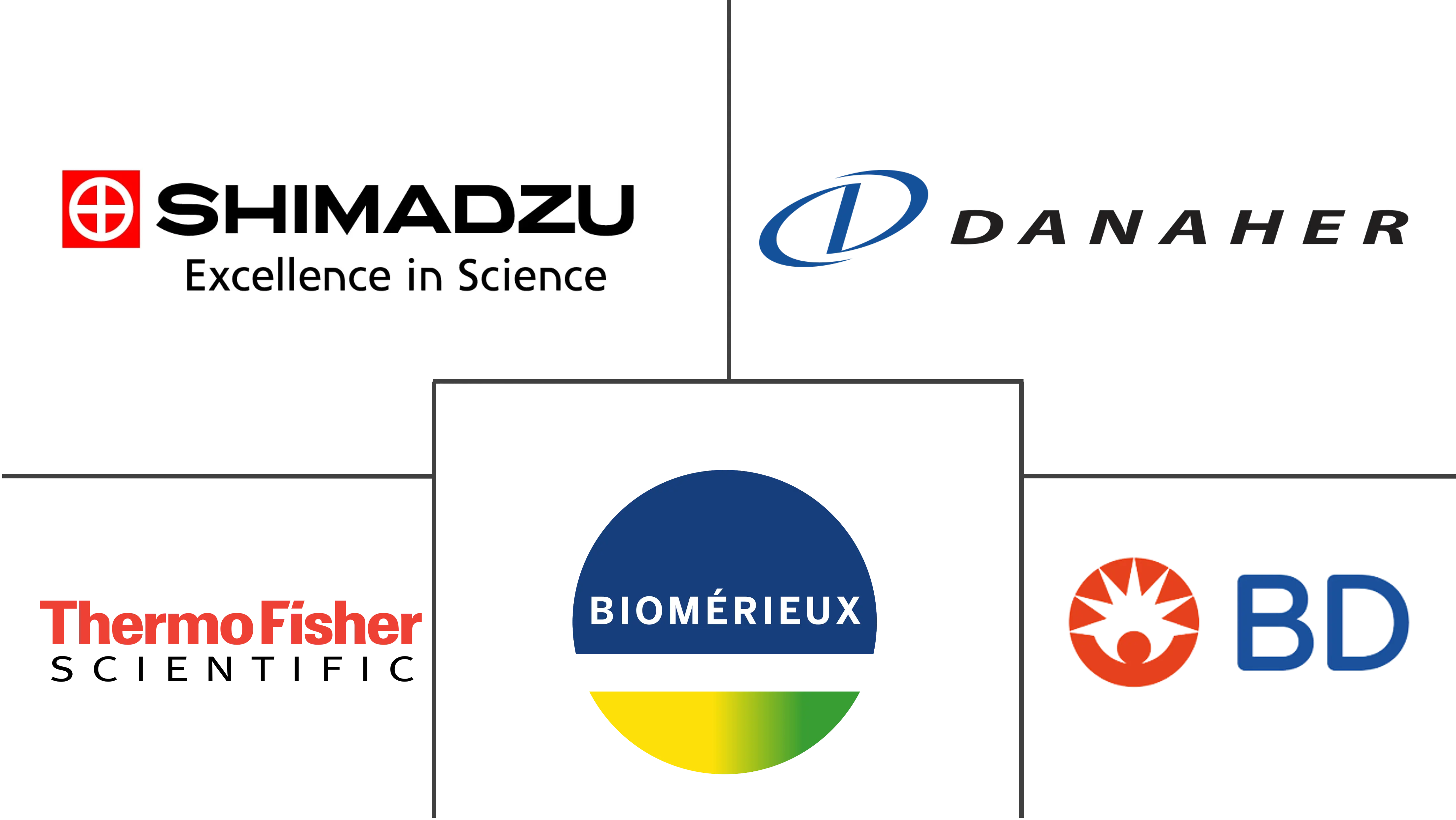Market Size of Microbial Identification Industry

| Study Period | 2019 - 2029 |
| Base Year For Estimation | 2023 |
| Forecast Data Period | 2024 - 2029 |
| CAGR | 7.00 % |
| Fastest Growing Market | Asia Pacific |
| Largest Market | North America |
Major Players
*Disclaimer: Major Players sorted in no particular order |
Need a report that reflects how COVID-19 has impacted this market and its growth?
Microbial Identification Market Analysis
The microbial identification market is projected to witness a CAGR of 7% over the forecast period.
The COVID-19 outbreak had a significant impact on the microbial identification market due to the scarcity of microbial identification laboratory reagents and the closures of diagnostics centers and hospitals. For instance, according to an article published in October 2021 in PubMed, there was a reduction in the availability of quality laboratory reagents and consumables for bacteriology and antimicrobial susceptibility testing and the ability to service machines and equipment. Decreases were also more frequently reported by the African and Eastern Mediterranean regions. However, the market is anticipated to expand in the coming years due to the increase in food contamination issues and the rise in government funding for microbial identification testing.
Certain other factors propelling the market growth are the rising burden of infectious diseases and technological advancements in microbial identification. For instance, according to data published by the WHO in the Global Tuberculosis Report 2021, most of the tuberculosis cases were found in South-East Asia (43%), Africa (25%), and the Western Pacific (18%), and lesser numbers of tuberculosis cases were found in the Eastern Mediterranean (8.3%), the Americas (3.0%) and Europe (2.3%). Similarly, according to WHO data published in 2021, Sub-Saharan Africa likely continues to endure the burden of malaria, accounting for approximately 95% of all cases and 96% of all deaths.
Furthermore, in August 2021, the UN Environment Programme (UNEP) and Indian Council of Medical Research (ICMR) launched a new collaborative project 'Priorities for the Environmental Dimension of Antimicrobial Resistance (AMR) in India', marking an important step towards recognizing and addressing the environmental dimension of antimicrobial resistance. The project aimed to strengthen the environmental aspects of national- and state-level AMR strategies and action plans. It undertook secondary research and stakeholder consultations to enhance understanding of the environmental dimension of AMR in India. This is a sound example of how government funding is likely to boost the market.
Additionally, growing food safety concerns in packed and non-packed food are also contributing to the market growth. People are now focused more on eating processed foods, which carry a significant danger of microbial contamination.According to data published by the WHO in May 2022, an estimated 600 million people fell ill eating contaminated food. In addition, USD 110 billion was lost each year in productivity and medical expenses resulting from unsafe food in low- and middle-income countries.
Several factors contribute to the growth of the market, however, the high cost of automated microbial identification systems is likely to impede market growth over the forecast period.
